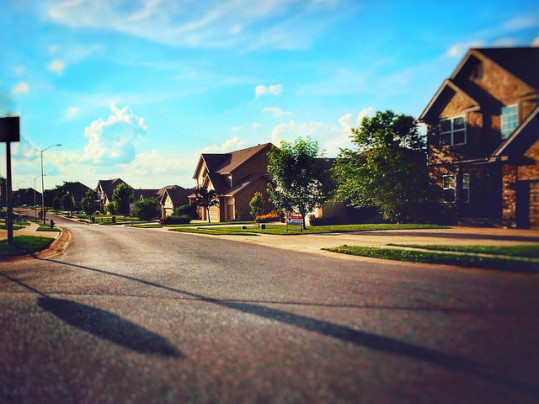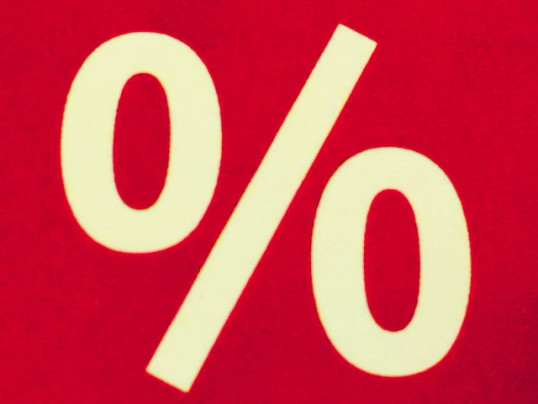New home construction is an important part of maintaining a healthy housing market. Without a steady supply of new homes, the total number of homes for sale will stall and prices will climb. That’s why the National Association of Home Builders tracks builder confidence with their monthly Housing Market Index. The index surveys builders about current conditions and their expectations for the next six months. Answers are scored on a scale where any number above 50 indicates more builders feel conditions are good than poor. In December, the index reached 74 – the highest recorded score since July 1999. Robert Dietz, NAHB’s chief economist, says housing demand is on the rise. “The HMI measure of home buyer traffic rose eight points, showing that demand for housing is on the rise,” Dietz said. “With low unemployment rates, favorable demographics, and a tight supply of existing home inventory, we can expect continued upward movement of the single-family construction sector next year.” More here.
Archive for December 2017
How Single-Family Rentals Slowed 1st Time Buyers
If you spend any time reading about real estate, you know that there has been a lot of discussion recently about inventory and first-time home buyers. Specifically, there are fewer homes available for sale and fewer first-time home buyers active in the market than is considered typical. Of course, there are many reasons that both of these things are true. Among them, slower-than-normal new home construction, student loan debt, and rising rent all play a role. But, according to a recent analysis from Zillow, there’s another reason that there are fewer homes on the market and fewer young people buying. According to the analysis, many of the affordable homes that would typically sell to first-time buyers were purchased by investors after home prices plummeted following the housing crash. These houses were then converted into rental properties. This, combined with rising demand for single-family rentals, has led to a six percent increase in the number of single-family homes rented out between 2007 and 2016. In short, there are fewer affordable homes to buy in many markets because those homes are currently being occupied as rental units. More here.
Homeownership And The Gig Economy
Smartphones and the internet have given rise to a number of on-demand services that offer Americans the ability to supplement their income by providing work as independent contractors. Whether delivering groceries or ride sharing, many Americans are now working in what is known as the “gig economy.” In fact, as part of their third quarter National Housing Survey, Fannie Mae found nearly one-fifth of adults have worked in the gig economy. Generally speaking, these Americans have other full-time work, though younger respondents were more likely to rely on these types of jobs for income. Overall, however, participants in this type of work were more positive about their household income and financial outlook. But how does this type of job impact prospects for buying and owning a home? Well, that remains to be seen. Though gig-economy workers are generally more confident in their income, they also express concern about being able to qualify for a mortgage and save for a down payment. Particularly, among current renters, gig-economy workers were less likely to say they’d buy a home the next time they move. Also, there is some question about how underwriting standards handle what is becoming an increasingly popular way for Americans to make some money on the side. More here.
Survey Finds Mortgage Rates Up Last Week
According to the Mortgage Bankers Association’s Weekly Applications Survey, average mortgage rates were up slightly last week, with increases seen for 30-year fixed-rate loans with conforming loan balances, mortgages backed by the Federal Housing Administration, and 15-year fixed-rate loans. Rates for jumbo loans, on the other hand, were down from the previous week. Joel Kan, an MBA economist, told CNBC there were a number of factors influencing rates. “Treasury rates started to fall mid-week, as disappointing data on the U.S. trade deficit and non-manufacturing sector were released, but picked up later in the week, as market fears of a government shutdown eased and the November employment report showed strong job growth,” Kan said. In other words, there are many economic factors driving rates right now. Despite this, however, they have remained within a fairly narrow range for quite some time. The MBA’s weekly survey has been conducted since 1990 and covers 75 percent of all retail residential mortgage applications. More here.
Owners Become More Realistic About Home Values
When something is yours, it can be easy to overestimate its value. Your personal attachment and nostalgia for something can make it seem as though its worth far more than it actually is. This is true whether you’re having a garage sale or you’re selling a house. Therefore, it’s important to try and remain detached and realistic when setting prices for the things you love. For homeowners, this can be especially difficult. The good news is, according to recent research, homeowners are becoming better at estimating the value of their homes. In fact, the gap between what homeowners believe their home is worth and what it appraises for is now just 0.67 percent – the smallest it’s been since March 2015. Of course, where you are matters. Some of the difficulty homeowners have in estimating their home’s value is due to the changing nature of the real-estate market. If you’re in an area where home prices have been rising relatively quickly, you may even underestimate its appraised value. More here.
Will More Homeowners Sell Houses Next Year?
In any market, supply and demand determines whether it’s a good time to buy or a good time to sell. This, of course, is also true for real estate. Following the housing crash, there were far fewer buyers than available homes and prices fell dramatically. This presented an opportunity for buyers. In the ensuing years, lower-than-normal prices brought prospective home buyers and real estate investors out in search of bargains. Naturally, as those homes began to sell, inventory fell and prices began to rebound. Now, with a stronger economy and home prices having recovered, there are fewer homes available for sale than there are interested buyers. In other words, what was once a buyer’s market has begun to favor sellers. And, according to new research, that may present some opportunities in the coming year. Trulia’s 2018 Housing Outlook Report found that 31 percent of survey respondents felt like 2018 will be a better year for selling a house than 2017 was. And, if that leads to an increasing number of current homeowners selling their homes, it could mean the housing market begins to balance and prices begin to level off in areas that have seen recent spikes. More here.
Americans Optimistic About Buying A Home
An increasing number of Americans say they feel now is a good time to buy a house, according to the most recent Home Purchase Sentiment Index from Fannie Mae. The index – a monthly measure of how consumers feel about real estate, home prices, mortgage rates, job security, and their financial situation – is now nearing its all-time high, reached in September. Doug Duncan, Fannie Mae’s chief economist, says Americans’ perception of the real estate market is improving. “In November, the HPSI rebounded to near its all-time high, returning the index to its gradual upward trend and suggesting fairy stable consumer home-buying attitudes,” Duncan said. “These results are consistent with our expectation that the housing market will continue its modest expansion going forward.” Among respondents, there was a 7 percent increase in participants who said now was a good time to buy a house and a 4 percent increase in the number who feel it’s a good time to sell. More here.







